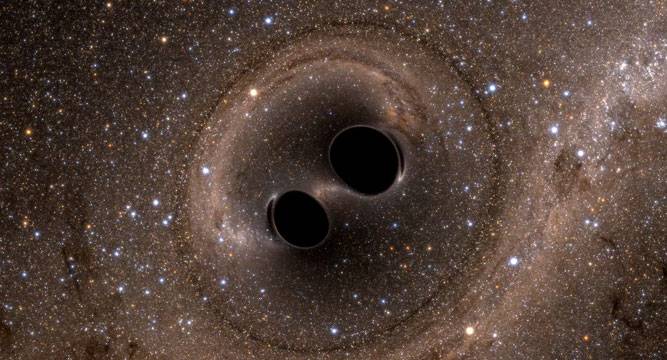-
Tips for becoming a good boxer - November 6, 2020
-
7 expert tips for making your hens night a memorable one - November 6, 2020
-
5 reasons to host your Christmas party on a cruise boat - November 6, 2020
-
What to do when you’re charged with a crime - November 6, 2020
-
Should you get one or multiple dogs? Here’s all you need to know - November 3, 2020
-
A Guide: How to Build Your Very Own Magic Mirror - February 14, 2019
-
Our Top Inspirational Baseball Stars - November 24, 2018
-
Five Tech Tools That Will Help You Turn Your Blog into a Business - November 24, 2018
-
How to Indulge on Vacation without Expanding Your Waist - November 9, 2018
-
5 Strategies for Businesses to Appeal to Today’s Increasingly Mobile-Crazed Customers - November 9, 2018
Gravitational waves detected 100 years after Einstein’s prediction
About 100 years ago, Albert Einstein predicted the existence of gravitational waves, but they were undetectable – until now.
Advertisement
The existence of gravitational waves was first demonstrated indirectly in the 1970s and 1980s by American scientists who found a binary pulsar whose orbit was slowly shrinking over time because of the release of energy in a way Einstein’s theory predicted.
Astronomers hailed the finding as achievement of historic proportions, one that opens the door to a new way of observing the cosmos and the violent collisions that are constantly shaping it. For them, it’s like turning a silent movie into a talkie because these waves are the soundtrack of the universe.
Gravitational waves are a reality, according to scientists from an institution that has been hoping to observe them.
The waves, detected on September 14 a year ago, came from two black holes combining in an enormous collision that happened at a time when life was just forming on Earth.
The announcement by the Laser Interferometer Gravitational-Wave Observatory on Thursday that they had detected gravitational waves was seen as a major scientific advancement.
The discovery was made by the LIGO Scientific Collaboration (which includes the GEO600 Collaboration and the Australian Consortium for Interferometric Gravitational Astronomy) and the Virgo Collaboration using data from the two LIGO detectors.
Analysis of the waves suggests they originated from a system of two black holes, each with the mass of about 30 Suns, that gravitationally drew closer to each other.
The discovery, based on ripples in space-time detected by LIGO, supports a prediction made by Albert Einstein that’s essential to his general theory of relativity. The renowned Dr. Joseph Weber, who helped inspire LIGO, claimed to have detected gravitational waves as far back as 1969.
“We have detected gravitational waves”. The waves are created when you have massive objects, in this case two black holes, swirling around each other, explained Daniel Batcheldor, head of the Physics and Space Sciences at Florida Institute of Technology.
The waves were so tiny, Reitze said, that only LIGO can measure them. “Up to now humanity has been deaf to the universe”.
The Indian Initiative in Gravitational-Wave Observations (IndIGO), a consortium of Indian gravitational-wave physicists, was set up in 2009.
An global group of physicists are celebrating a monumental breakthrough in science, and among them are a half a dozen Rochester Institute of Technology researchers. The geometric theory of gravitation was published by one of the most famed scientists that the world has produced in the year 1915.
Advertisement
Until now, Thorne said, scientists have seen spacetime only as if it were the surface of a calm ocean.




























